Belief systems (religions)
Learn more about the world's belief systems, explore their myths, and see their pantheon of deities. Not all belief systems are classified as organized religions. Some ancient religious beliefs, for example, represent more complex cultural patterns instead of formal, organized religions.
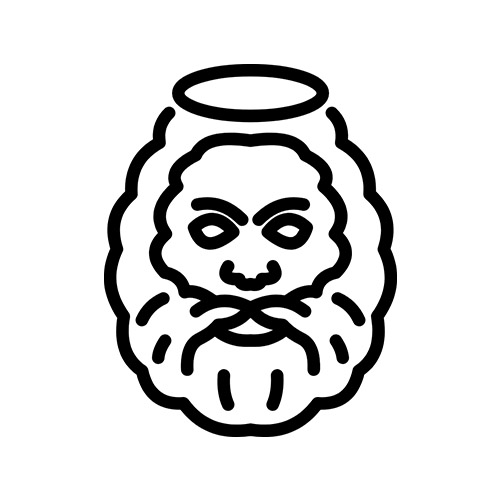 Abrahamic Religion · MonotheisticAbrahamic religions refer to Semitic monotheistic religious groups that are based on the patriarch Abraham in the Judean tradition. The top three are Christianity, Islam, and Judaism.
Abrahamic Religion · MonotheisticAbrahamic religions refer to Semitic monotheistic religious groups that are based on the patriarch Abraham in the Judean tradition. The top three are Christianity, Islam, and Judaism. Ainu Culture · Polytheistic · 1 mythAinu culture refers to the spiritual and cultural beliefs of the Ainu (or Aynu) people indigenous to northern Japan and parts of Russia.
Ainu Culture · Polytheistic · 1 mythAinu culture refers to the spiritual and cultural beliefs of the Ainu (or Aynu) people indigenous to northern Japan and parts of Russia.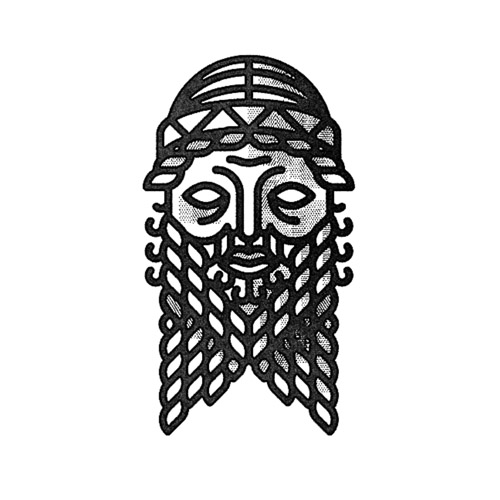 Akkadian Culture · Polytheistic · 1 mythAkkadian refers to a culture that emerged in Mesopotamia during the third millennium BCE. The belief system included many deities, most of whom were later diffused into Sumerian, Babylonian, and Assyrian culture.
Akkadian Culture · Polytheistic · 1 mythAkkadian refers to a culture that emerged in Mesopotamia during the third millennium BCE. The belief system included many deities, most of whom were later diffused into Sumerian, Babylonian, and Assyrian culture. Anatolian Culture · PolytheisticAnatolian culture refers to the similarities in spiritual beliefs, deities, and customs among peoples in present-day Turkey. Some distinct religions include Hittite, Luwian, Hattian, Hurrian, and others.
Anatolian Culture · PolytheisticAnatolian culture refers to the similarities in spiritual beliefs, deities, and customs among peoples in present-day Turkey. Some distinct religions include Hittite, Luwian, Hattian, Hurrian, and others. Ancient Greek Religion · Polytheistic · 4 myths
Ancient Greek Religion · Polytheistic · 4 mythsThe ancient Greek belief system represents a collection of cultural myths and stories that date back to circa 1300-1200 BCE. Its pantheon of deities were widely known and written about in Greek texts. The Romans adopted many Greek beliefs and renamed the deities according to the Latin language. In contemporary times, there are countless vestages of Greek culture in popular culture and practice.
 Anishinaabe Culture · PolytheisticAnishinaabe culture refers to the shared beliefs of some groups indigenous to parts of Canada and the United States (around Lake Superior).
Anishinaabe Culture · PolytheisticAnishinaabe culture refers to the shared beliefs of some groups indigenous to parts of Canada and the United States (around Lake Superior). Assyrian Religion · Polytheistic · 1 mythAssyrian religion was adapted from Babylonian and Akkadian culture during the first two centuries BCE. The religion was practiced from roughly 2000-500 BCE in modern-day Iraq and its chief deity was Aššur.
Assyrian Religion · Polytheistic · 1 mythAssyrian religion was adapted from Babylonian and Akkadian culture during the first two centuries BCE. The religion was practiced from roughly 2000-500 BCE in modern-day Iraq and its chief deity was Aššur. Aztec Religion · Polytheistic · 1 mythAztec religion refers to the cultural practices among several groups in central Mexico from ca. 1325-1520 CE.
Aztec Religion · Polytheistic · 1 mythAztec religion refers to the cultural practices among several groups in central Mexico from ca. 1325-1520 CE. Babylonian Religion · Polytheistic · 5 mythsThe Babylonian religion was practiced throughout modern-day Iraq and the general near east (Mesopotamia) during antiquity. Its chief deity was Marduk.
Babylonian Religion · Polytheistic · 5 mythsThe Babylonian religion was practiced throughout modern-day Iraq and the general near east (Mesopotamia) during antiquity. Its chief deity was Marduk.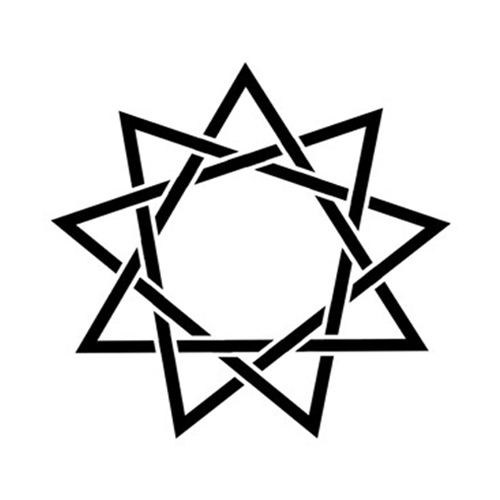 Bahá’í Religion · MonotheisticThe Bahá’í Faith is an Abrahamic religion founded in 1863 in Tehran, Iran. It was formally established by Mírzá Husayn ʻAlí Núrí, who later took the name Baháʼu'lláh.
Bahá’í Religion · MonotheisticThe Bahá’í Faith is an Abrahamic religion founded in 1863 in Tehran, Iran. It was formally established by Mírzá Husayn ʻAlí Núrí, who later took the name Baháʼu'lláh. Canaanite Religion · PolytheisticCanaanite religion refers to the cultural practices of people from the Levant (modern day Israel) between ca. 2000-1000 BCE.
Canaanite Religion · PolytheisticCanaanite religion refers to the cultural practices of people from the Levant (modern day Israel) between ca. 2000-1000 BCE. Cherokee Culture · Polytheistic · 1 mythCherokee culture refers to the shared spiritual beliefs of the Cherokee peoples indigenous to the southeastern United States (primarily North Carolina).
Cherokee Culture · Polytheistic · 1 mythCherokee culture refers to the shared spiritual beliefs of the Cherokee peoples indigenous to the southeastern United States (primarily North Carolina). Chinese Folk religion · Polytheistic · 1 mythChinese folk religion refers to varied beliefs and customs belonging to people from present-day China.
Chinese Folk religion · Polytheistic · 1 mythChinese folk religion refers to varied beliefs and customs belonging to people from present-day China. Christian Religion · Monotheistic · 3 myths
Christian Religion · Monotheistic · 3 mythsChristianity is one of the world's most widely practiced religions. It is an Abrahamic monotheistic religion based on the life and teachings of the Nazarene figure named Jesus. The important text associated with Christianity is the Holy Bible, which is comprised of the Old Testament and the New Testament. There are over two billion people practicing Christianity around the world, making it the biggest (with Islam behind it).
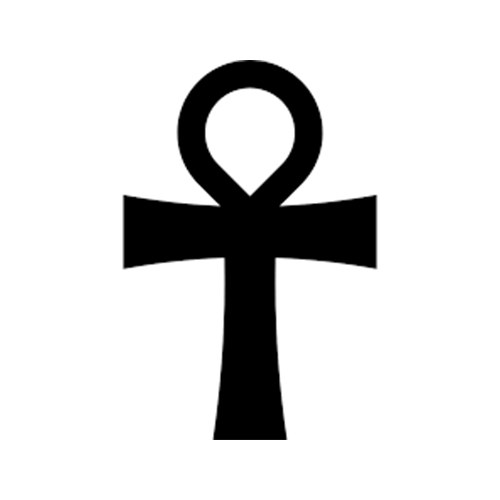 Egyptian Religion · Polytheistic · 8 mythsThe religion of ancient Egypt represents a cultural identity that lasted from ca. 3500 BCE to 300 CE, and included hundreds of myths, deities, and customs.
Egyptian Religion · Polytheistic · 8 mythsThe religion of ancient Egypt represents a cultural identity that lasted from ca. 3500 BCE to 300 CE, and included hundreds of myths, deities, and customs. Finnish Culture · Polytheistic · 1 mythFinnish culture refers to people from modern-day Finland and the Russian territory of Karelia.
Finnish Culture · Polytheistic · 1 mythFinnish culture refers to people from modern-day Finland and the Russian territory of Karelia.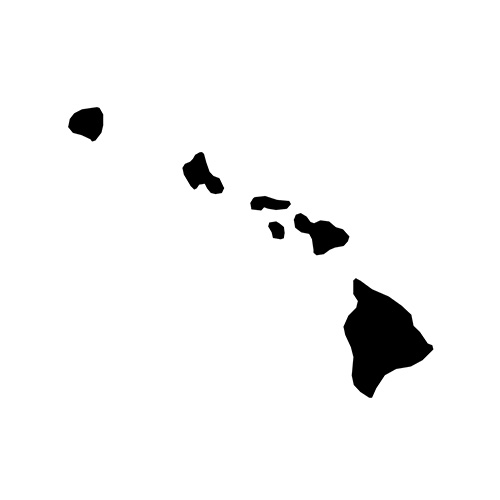 Hawaiian Religion · Polytheistic · 1 mythHawaiian religion refers to the spiritual beliefs and customs of peoples from present-day Hawaii (before the arrival of the Europeans).
Hawaiian Religion · Polytheistic · 1 mythHawaiian religion refers to the spiritual beliefs and customs of peoples from present-day Hawaii (before the arrival of the Europeans).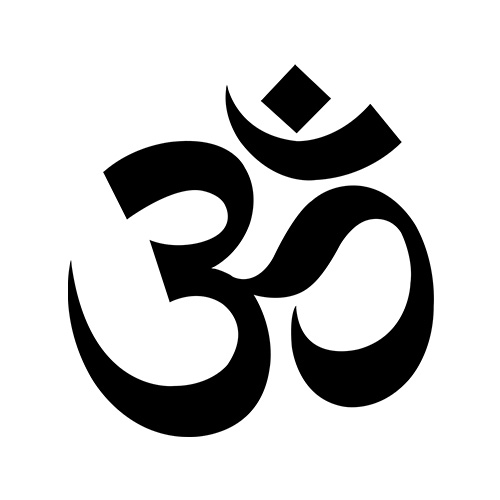 Hinduism Religion · PolytheisticHinduism refers to the broad religious category ascribed to many peoples in present-day India. With over one billion followers and many denominations, it is said to be one of the world's oldest belief systems.
Hinduism Religion · PolytheisticHinduism refers to the broad religious category ascribed to many peoples in present-day India. With over one billion followers and many denominations, it is said to be one of the world's oldest belief systems. Hittite Religion · PolytheisticHittite religion refers to cultural practices of an empire in Anatolia (modern day Turkey) between ca. 1700-1184 BCE.
Hittite Religion · PolytheisticHittite religion refers to cultural practices of an empire in Anatolia (modern day Turkey) between ca. 1700-1184 BCE. Hopi Religion · Polytheistic · 1 mythHopi religion refers to the spiritual beliefs and customs of the Hopi Tribe in northeastern Arizona. They broadly belong to the shared culture of the Pueblo peoples in the regional Southwest of the United States.
Hopi Religion · Polytheistic · 1 mythHopi religion refers to the spiritual beliefs and customs of the Hopi Tribe in northeastern Arizona. They broadly belong to the shared culture of the Pueblo peoples in the regional Southwest of the United States. Inca Religion · Polytheistic · 1 mythInca religion refers to the belief system of peoples in modern-day Bolivia and Peru.
Inca Religion · Polytheistic · 1 mythInca religion refers to the belief system of peoples in modern-day Bolivia and Peru. Inuit Culture · Polytheistic · 1 mythInuit culture refers to the spiritual beliefs of an indigenous group of Eskimo people that inhabit the arctic portion of Canada, Greenland, and Alaska.
Inuit Culture · Polytheistic · 1 mythInuit culture refers to the spiritual beliefs of an indigenous group of Eskimo people that inhabit the arctic portion of Canada, Greenland, and Alaska.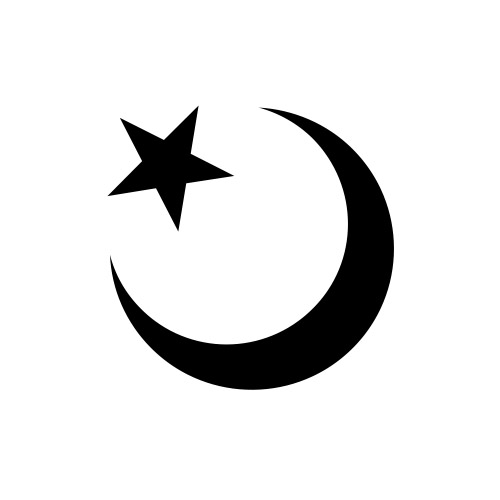 Islam Religion · Monotheistic · 1 mythLearn more about the Islam belief system, as well as its myths, deities, and customs.
Islam Religion · Monotheistic · 1 mythLearn more about the Islam belief system, as well as its myths, deities, and customs.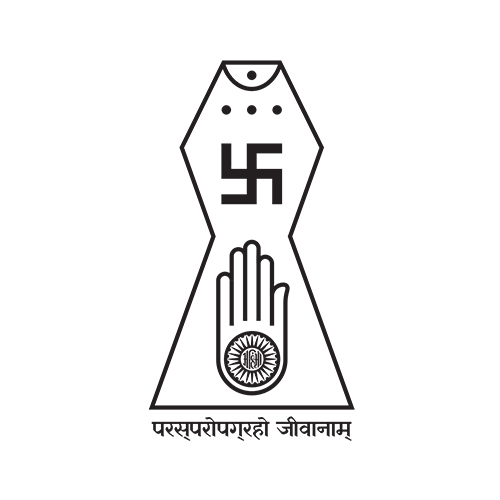 Jainism Religion · Transtheistic · 1 mythJainism is a religion practiced by a group of people who originated from India.
Jainism Religion · Transtheistic · 1 mythJainism is a religion practiced by a group of people who originated from India. Judaism Religion · Monotheistic
Judaism Religion · MonotheisticJudaism is one of the world's oldest religions and was the basis for Christianity, via the Old Testament (portion of the Bible). It is widely associated with the modern nation state of Israel and is considered one of the world's first monotheistic religions.
 Kawésqar Culture · Polytheistic · 1 mythKawésqar culture refers to people who occupy the southern most islands in Chile and Argentina (Tierra del Fuego).
Kawésqar Culture · Polytheistic · 1 mythKawésqar culture refers to people who occupy the southern most islands in Chile and Argentina (Tierra del Fuego). Kinh Religion · Polytheistic · 1 mythKinh folk religion refers to the spiritual beliefs and customs of some people from present-day Vietnam, in southeast Asia.
Kinh Religion · Polytheistic · 1 mythKinh folk religion refers to the spiritual beliefs and customs of some people from present-day Vietnam, in southeast Asia. Korean Shamanism Religion · Polytheistic · 1 mythKorean Shamanism refers to ancient folk religion of the present-day country of Korea.
Korean Shamanism Religion · Polytheistic · 1 mythKorean Shamanism refers to ancient folk religion of the present-day country of Korea. Māori Religion · Polytheistic · 2 mythsMāori religion refers to the cultural beliefs and practices of the Māori people in New Zealand (Polynesia).
Māori Religion · Polytheistic · 2 mythsMāori religion refers to the cultural beliefs and practices of the Māori people in New Zealand (Polynesia). Mayan Religion · Polytheistic · 1 mythMayan religion refers to the spiritual beliefs and customs of some indigenous people from Mesoamerica, mainly Mexico and Guatemala.
Mayan Religion · Polytheistic · 1 mythMayan religion refers to the spiritual beliefs and customs of some indigenous people from Mesoamerica, mainly Mexico and Guatemala.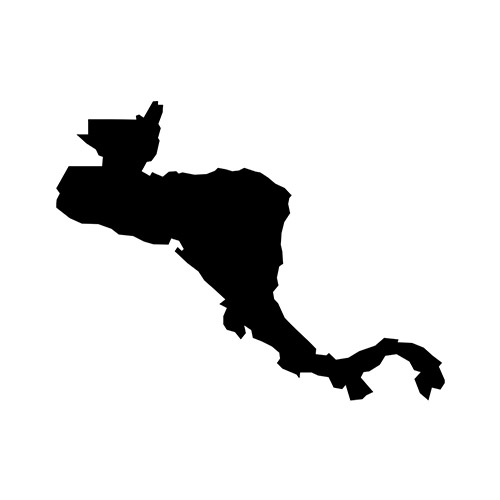 Mesoamerican Culture · PolytheisticMesoamerican belief systems refer to the cultures of central America between ca. 2000 BCE - 1520 CE: Olmec, Mayan, Aztec, Toltec, and others.
Mesoamerican Culture · PolytheisticMesoamerican belief systems refer to the cultures of central America between ca. 2000 BCE - 1520 CE: Olmec, Mayan, Aztec, Toltec, and others. Mesopotamian Culture · Polytheistic
Mesopotamian Culture · PolytheisticMesopotamian religion broadly included cultures in the ancient near east: Sumer, Akkad, Babylon, Assyria, and others. These cultures shared highly diffused customs, deities, and myths from ca. 3000 BCE - 400 CE. Many deities were diffused from one culture into another, with the result that religious beliefs were consistent and coherent. Around 400 CE, Christianity and other Abrahamic religions became more widely practiced. Mesopotamian cultures also gave rise to many chief features observed in the contemporary world: writing, large cities, political rulers, mythological narratives, and large architectural structures. Much of our understanding of Mesopotamia comes from artifacts unearthed in the region: clay tablets, inscriptions, and cylinder seals. Inscriptions were usually written in cuneiform, a writing system derived from making wedge-shaped marks, or impressions, upon surfaces. Finally, facets of Mesopotamian culture have survived through their influence on other belief systems, like Christianity, through shared motifs (e.g., flood, creation, prestige, and hero myths).
 Minoan Culture · Polytheistic · 1 mythMinoan culture refers to spiritual beliefs and customs practiced by peoples living in Crete and some Aegean islands between ca. 2800-1450 BCE.
Minoan Culture · Polytheistic · 1 mythMinoan culture refers to spiritual beliefs and customs practiced by peoples living in Crete and some Aegean islands between ca. 2800-1450 BCE. Mongolian Shamanism Culture · Polytheistic · 1 mythMongolian Shamanism refers to the cultural beliefs of some indigenous Mongolian people in northeastern Asia.
Mongolian Shamanism Culture · Polytheistic · 1 mythMongolian Shamanism refers to the cultural beliefs of some indigenous Mongolian people in northeastern Asia. Mormonism Religion · MonotheisticMormonism is the religious tradition of the Latter Day Saint movement started by Joseph Smith in the 1820s.
Mormonism Religion · MonotheisticMormonism is the religious tradition of the Latter Day Saint movement started by Joseph Smith in the 1820s. Nauruan Culture · Monotheistic · 1 mythNauruan culture refers to the spiritual beliefs and customs of the indigenous Nauru people of an island in Micronesia.
Nauruan Culture · Monotheistic · 1 mythNauruan culture refers to the spiritual beliefs and customs of the indigenous Nauru people of an island in Micronesia.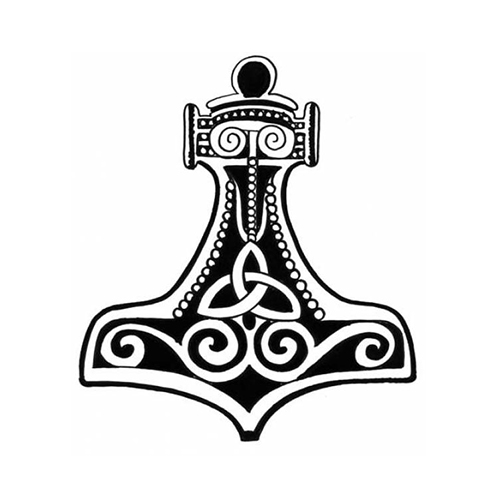 Norse Paganism Religion · Polytheistic · 3 mythsNorse Paganism refers to the beliefs and traditions of people from Scandinavia: Iceland, Norway, Sweden, and Denmark.
Norse Paganism Religion · Polytheistic · 3 mythsNorse Paganism refers to the beliefs and traditions of people from Scandinavia: Iceland, Norway, Sweden, and Denmark. Ojibwe (Chippewa) Culture · Polytheistic · 1 mythOjibwe (Chippewa) culture refers to the shared spiritual beliefs of the Ojibwe-speaking peoples of Lake Superior (U.S.) and parts of Canada. They appear to be part of a broader indigenous group named the Anishinaabe.
Ojibwe (Chippewa) Culture · Polytheistic · 1 mythOjibwe (Chippewa) culture refers to the shared spiritual beliefs of the Ojibwe-speaking peoples of Lake Superior (U.S.) and parts of Canada. They appear to be part of a broader indigenous group named the Anishinaabe.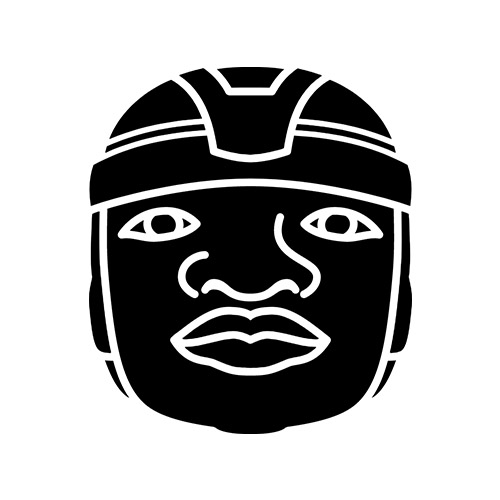 Olmec Religion · PolytheisticOlmec religion refers to the assumed spiritual beliefs of a group of people in Mesoamerica from ca. 2000 BCE - 400 CE. Their identity is largely determined by a pattern of material culture.
Olmec Religion · PolytheisticOlmec religion refers to the assumed spiritual beliefs of a group of people in Mesoamerica from ca. 2000 BCE - 400 CE. Their identity is largely determined by a pattern of material culture. Orisha Religion · Polytheistic · 1 mythOrisha is the collection of religious beliefs native to the Yoruba peoples in modern-day Nigeria.
Orisha Religion · Polytheistic · 1 mythOrisha is the collection of religious beliefs native to the Yoruba peoples in modern-day Nigeria. Pueblo Culture · PolytheisticPueblo culture refers to the shared material culture and beliefs of peoples from the Southwestern United States: New Mexico, Arizona, Utah, and others.
Pueblo Culture · PolytheisticPueblo culture refers to the shared material culture and beliefs of peoples from the Southwestern United States: New Mexico, Arizona, Utah, and others. Raëlism Religion · Atheistic · 1 mythRaëlism is a religion based on the belief in extraterrestrial beings from other parts of the universe.
Raëlism Religion · Atheistic · 1 mythRaëlism is a religion based on the belief in extraterrestrial beings from other parts of the universe. Roman Paganism Religion · Polytheistic · 2 myths
Roman Paganism Religion · Polytheistic · 2 mythsRoman Paganism refers to the cultural practices of the Roman empire before Christianity (ca. 756 BCE - 325 CE). The Romans seemingly adopted many deities and concepts from ancient Greek cultural practices, albeit with Latinized names of deities (e.g., Greek Zeus became Roman Jupiter).
 San Religion · Polytheistic · 1 mythSan religion refers to the cultural practices of the San peoples; who, sometimes, are called by the term 'Bushmen.'
San Religion · Polytheistic · 1 mythSan religion refers to the cultural practices of the San peoples; who, sometimes, are called by the term 'Bushmen.' Sanamahism Religion · Polytheistic · 1 mythSanamahism religion refers to the spiritual beliefs of the Meitei people in northeastern India.
Sanamahism Religion · Polytheistic · 1 mythSanamahism religion refers to the spiritual beliefs of the Meitei people in northeastern India. Scientology Religion · MonotheisticScientology is an active religion created in the early 1950s by Lafayette Ronald Hubbard, an American author.
Scientology Religion · MonotheisticScientology is an active religion created in the early 1950s by Lafayette Ronald Hubbard, an American author. Serer Religion · Polytheistic · 1 mythSerer religion refers to the cultural beliefs of the Serer people in western Africa: mainly Senegal and Gambia.
Serer Religion · Polytheistic · 1 mythSerer religion refers to the cultural beliefs of the Serer people in western Africa: mainly Senegal and Gambia. Shinto Religion · Polytheistic · 1 mythShinto religion refers to the traditional spiritual belief system of the peoples of Japan.
Shinto Religion · Polytheistic · 1 mythShinto religion refers to the traditional spiritual belief system of the peoples of Japan.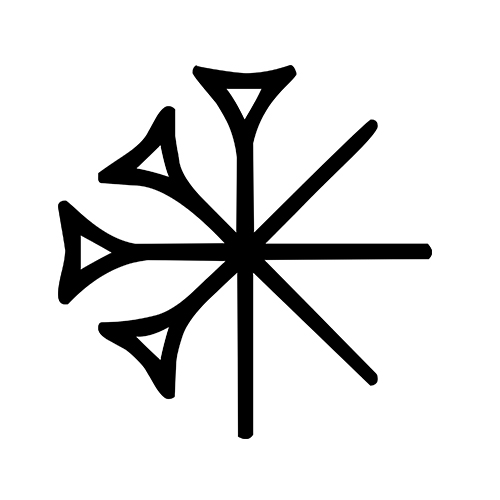 Sumerian Religion · Polytheistic · 7 mythsSumerian religion refers to spiritual beliefs practiced from ca. 4500-1900 BCE in Mesopotamia, or modern-day southern Iraq. Many deities were diffused into other Mesopotamian cultures.
Sumerian Religion · Polytheistic · 7 mythsSumerian religion refers to spiritual beliefs practiced from ca. 4500-1900 BCE in Mesopotamia, or modern-day southern Iraq. Many deities were diffused into other Mesopotamian cultures. Taoism Folk religion · Monotheistic · 1 mythTaoism is an ancient belief system and folk religion that originated in China. It is based on a natural order of the universe.
Taoism Folk religion · Monotheistic · 1 mythTaoism is an ancient belief system and folk religion that originated in China. It is based on a natural order of the universe.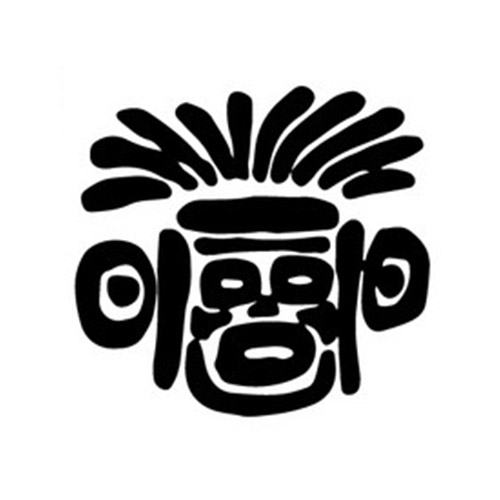 Toltec Religion · Polytheistic · 1 mythToltec religion refers to spiritual beliefs held by a group in central Mexico (city of Tollan) between ca. 800-1150 CE.
Toltec Religion · Polytheistic · 1 mythToltec religion refers to spiritual beliefs held by a group in central Mexico (city of Tollan) between ca. 800-1150 CE. Tungus Culture · Polytheistic · 1 mythTungus refers to a culture of Tungusic speaking peoples from Siberia and some parts of northeastern Asia. The term is linguistically derived from the name of the language spoken.
Tungus Culture · Polytheistic · 1 mythTungus refers to a culture of Tungusic speaking peoples from Siberia and some parts of northeastern Asia. The term is linguistically derived from the name of the language spoken. Uncategorized Other · Polytheistic · 1 myth
Uncategorized Other · Polytheistic · 1 mythSome myths, like modern ones that are generalized, don't seem to fall into a traditional category. For that reason, they are considered general myths and do not readily align themselves with a single religion or culture.
 Vaishnavism Religion · Polytheistic · 1 mythVaishnavism refers to a religious denomination of Hinduism centered on the supreme deity named Vishnu.
Vaishnavism Religion · Polytheistic · 1 mythVaishnavism refers to a religious denomination of Hinduism centered on the supreme deity named Vishnu. Zulu Culture · Polytheistic · 1 mythZulu religion refers to the belief system of people native to the eastern portion of South Africa, in KwaZulu-Natal.
Zulu Culture · Polytheistic · 1 mythZulu religion refers to the belief system of people native to the eastern portion of South Africa, in KwaZulu-Natal. Zuni Religion · Polytheistic · 1 mythZuni religion refers to the Pueblo of Zuni tribe in New Mexico, United States.
Zuni Religion · Polytheistic · 1 mythZuni religion refers to the Pueblo of Zuni tribe in New Mexico, United States.





